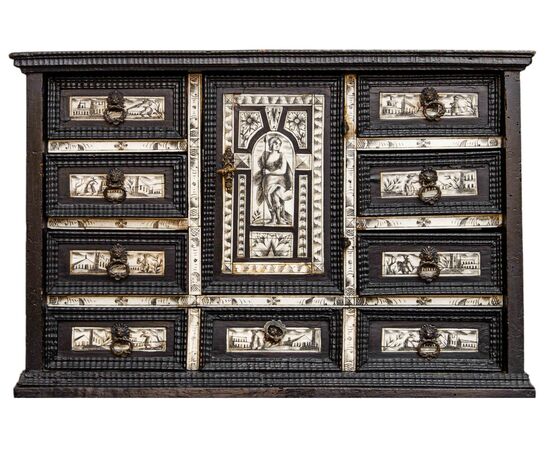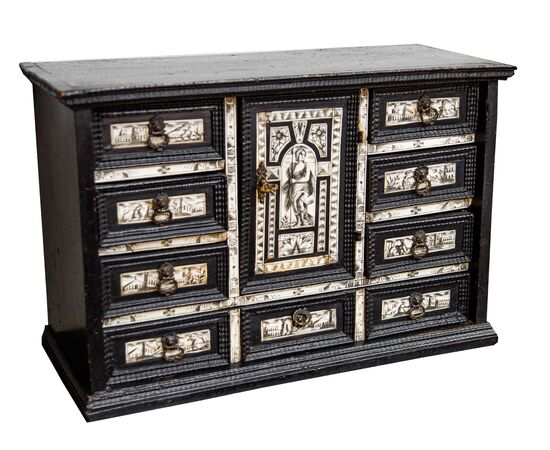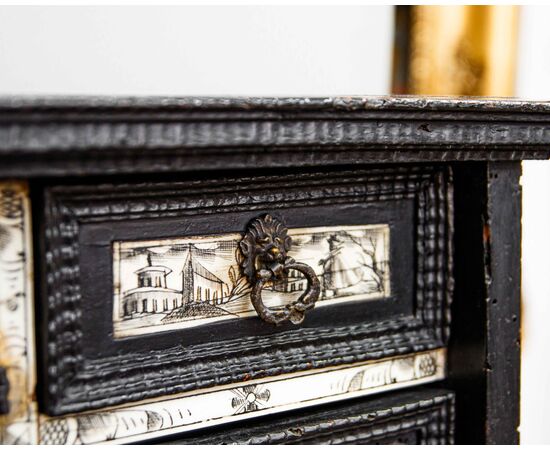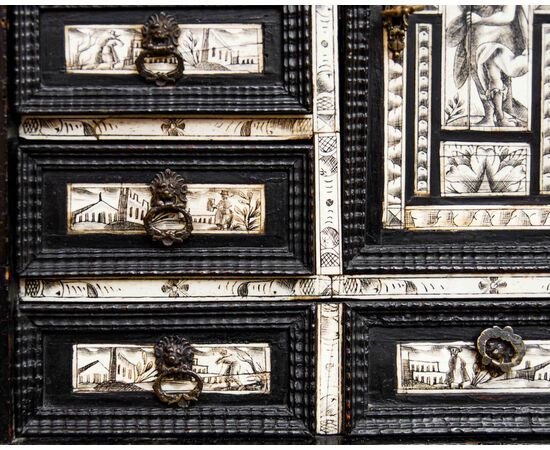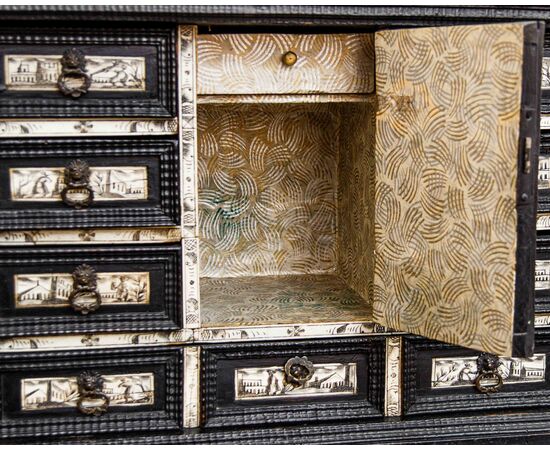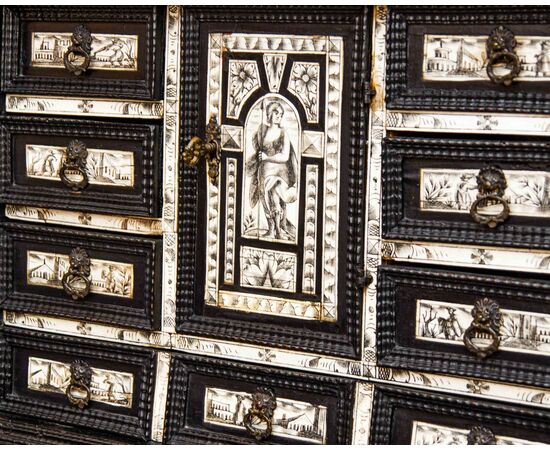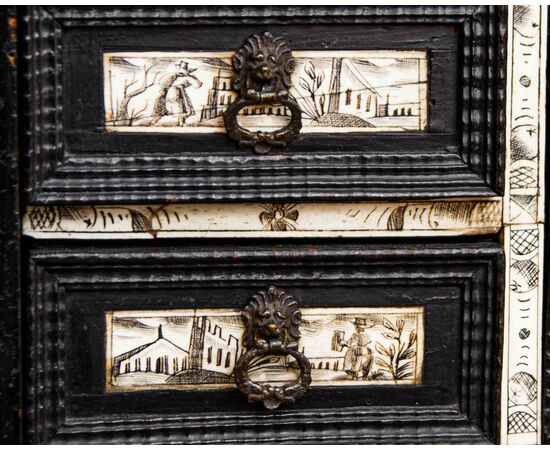Northern Italy, 17th century, Coin cabinet
Northern Italy, 17th century Coin Cabinet Ebonized wood and ivory, cm 41 x 62 x 27 Accompanied by CITES Community Certificate Of rectangular shape, the coin cabinet has a door on the front that conceals an internal cabinet, while on the sides there are three drawers profiled with finely carved ebony frames that frame ivory plaques with rural scenes engraved with a burin inside. The drawer pulls are bronze in the shape of a lion's head. Three small drawers open in the lower part, also with ivory fronts bearing depictions of bucolic scenes and always with bronze handles. The central door instead presents the figure of an anciently dressed warrior woman, with shoes and tunic, while leaning on a spear planted in the ground. See, as an example, in particular for the decorative typology, a cabinet with the figure of Diana preserved in the Baroffio Museum of the Sacro Monte of Varese. Or the cabinets that appeared on the antiquarian market, the one in the Cagnola collection in Gazzada and one in a private collection attributable to 1630 in Milan which presents a similar ivory decoration in the external frame. Essentially two typologies and two production centers have been identified: Naples and especially Lombardy, where the piece of furniture in question can be placed, subject to Spanish rule, small coin cabinets have been attributed to it, without plastic and architectural elements, with plaques depicting, often in a cursive manner, characters, animals and plant racemes.

